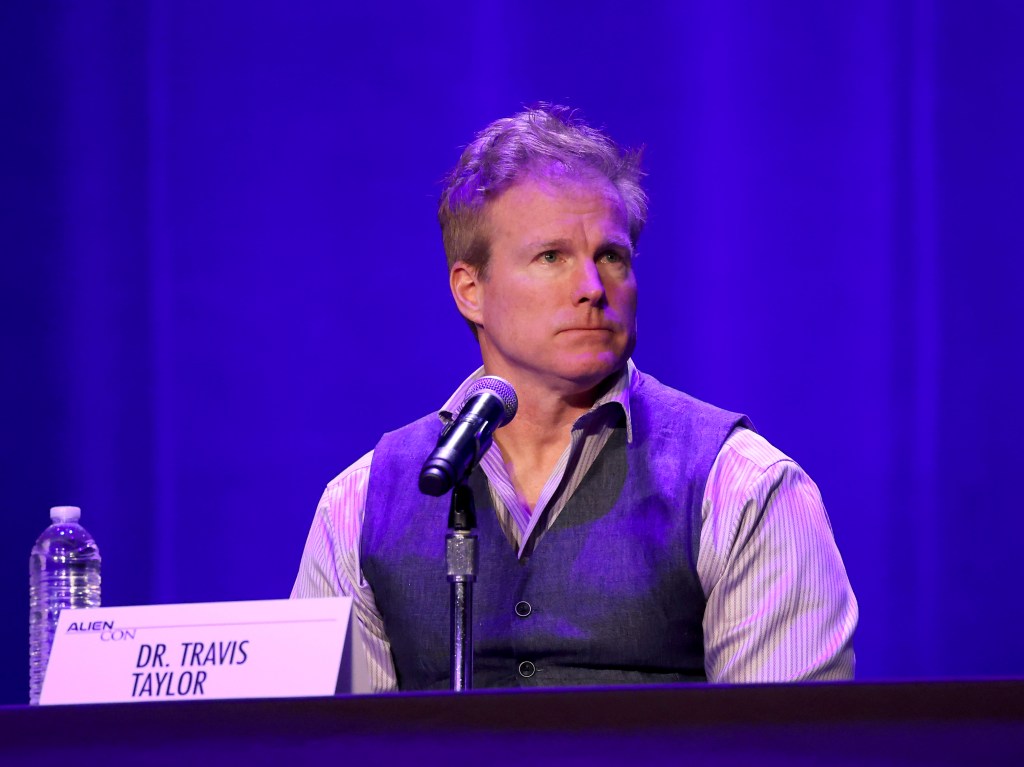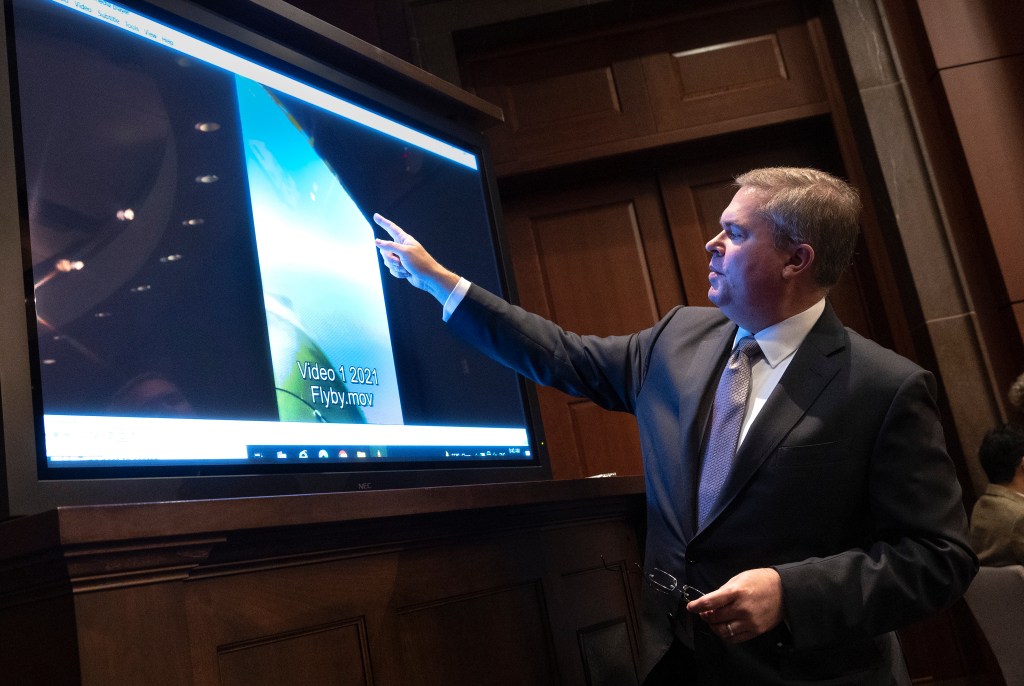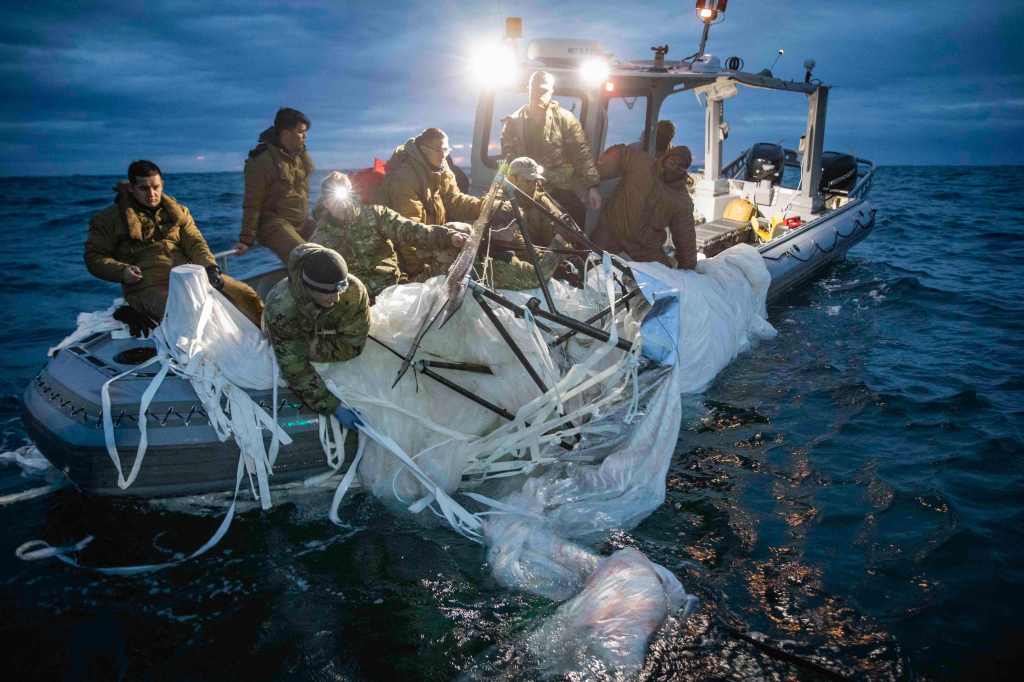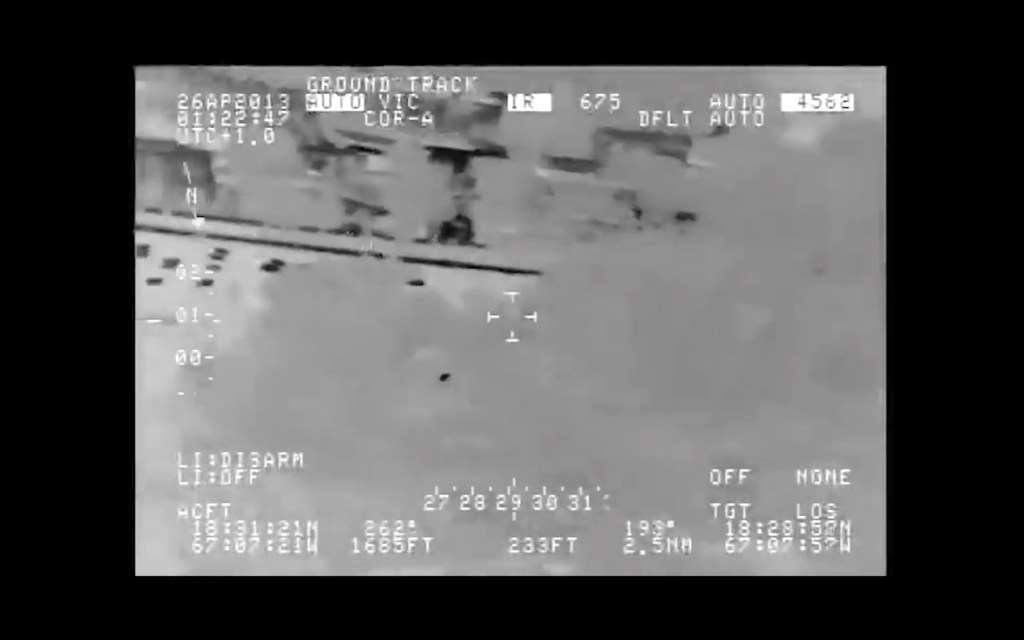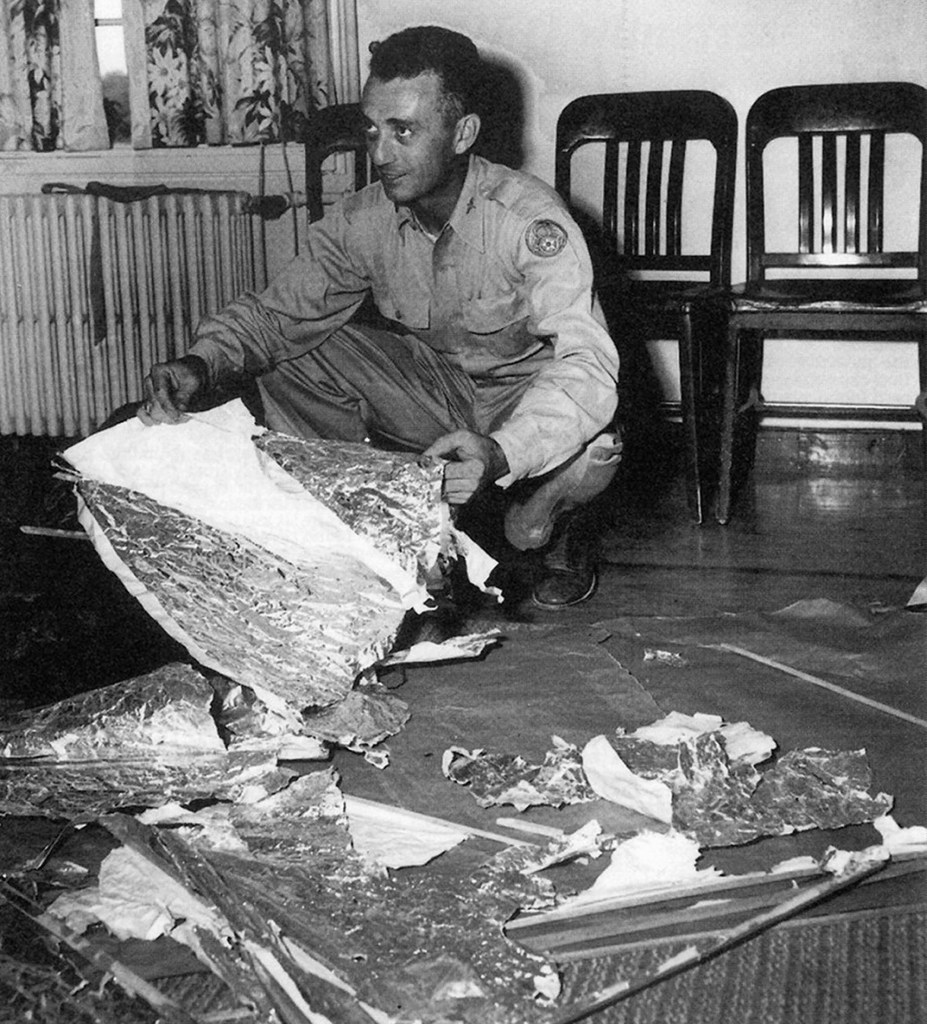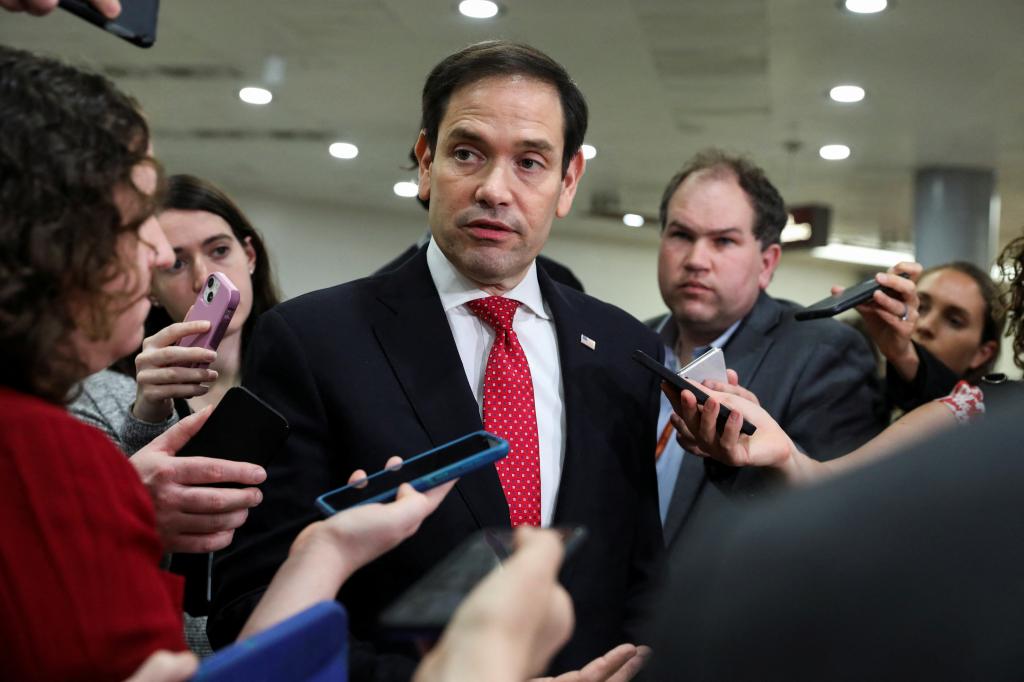Ufology, the study of UFOs as crafts of nonhuman origin, has always had a bit of an image problem.
The term “UFO” conjures visions of flying saucers and gray aliens.
Suggest to scientists that they study UFOs, and they’re likely to burst out laughing.
The military has long viewed UFO claims as a distraction from real issues of national security and has avoided discussion of UFOs for decades.
What ufologists want more than anything (besides actual proof of extraterrestrials) is for serious people to pay serious attention to them.
But a sequence of recent events — most notably, the shooting down of three “UFOs” along with a wayward Chinese spy balloon — is leading to the very scrutiny that ufology enthusiasts have long desired.
But this closer look, to their great chagrin, will almost certainly reveal little compelling evidence that UFOs actually exist.
And so, with great irony, serious people paying serious attention may finally doom ufology to obscurity.
Ufology has had considerable success in achieving legitimacy in recent years.
Over the past decade, for instance, UFOs were rebranded as the less silly-sounding “UAP” (unidentified Anomalous Phenomena).
A 2017 story in The New York Times, revealed the existence of a little-known Department of Defense program to study unidentified objects. And in 2020, the Navy released official videos of “unidentified” phenomena.
This then led to the formation of a UAP task force within the DOD and eventually to congressional briefings and hearings along with two Pentagon reports, and now to the establishment of the All-domain Anomaly Resolution Office (AARO) to further ID unknown crafts.
Private individuals and academics are spending millions of dollars on the hunt for high-quality UFO pictures. UAP startups are exploring the UFO space to make money while trying to find evidence of their existence.
All of this interest reached a frenzy with the arrival of the Chinese spy balloon and then even more with the announcement that three mysterious “objects” had been shot down in early February.
The military admitted that they did not know exactly what the objects were, so they were unidentified, and flying, and objects — real UFOs!
But North America is covered by two things: radar and balloons.
FAA radar constantly scans every cubic foot of navigable airspace to track commercial aircraft and make sure they don’t collide with each other.
NORAD (North American Aerospace Defense Command) also scours the skies looking for incoming threats, like Russian bombers or nuclear missiles.
Historically though, they have ignored balloons, just filtering them out with the rest of the clutter.
There are lots of balloons in the air.
Party balloons are let go and soar into the sky.
Universities launch balloons to carry experiments into the upper atmosphere.
Ham radio hobbyists attach tiny radios to mylar balloons and send them around the world.
This is why, unsurprisingly, it became rapidly clear that the three “UFOs” shot down, were actually balloons.
“The intelligence community’s current assessment is that these three objects were most likely balloons tied to private companies, recreation, or research institutions studying weather or conducting other scientific research,” declared President Biden in mid-February, a few days after the incident.
The balloon fiasco drew attention to a rich and untapped vein of data in the form of the radar tracks that were previously filtered out by the FAA or by NORAD.
For years, Navy pilots have spoken of seeing UFOs on their radar “every day.”
If UFOs were to be found anywhere, radar data could hold the key.
After the spy balloon incident, the Pentagon revealed that they had in fact been looking back through radar data, searching for anything anomalous.
And what did they discover? Just more spy balloons previously overlooked during the Trump administration.
A similar effort has also been mounted by AARO, the latest official federal UAP-hunting organization.
They’re sourcing data from the FAA and using “patterns of life” AI analysis to try to find anomalous signals in a sea of noise.
All with the goal, of course, of proving UFOs are actually real.
Yet even with today’s incredibly powerful computers and massive new AI technologies, these radar efforts have failed to deliver.
As the military continues to devote money and brainpower to “finding” UFOs, all they can come up with is further proof they don’t exist.
Similarly, advances in camera technology, which should make it easier to snap pics of mysterious spacecraft, are actually revealing these anomalies to be, well, merely anomalies.
A generation ago, compelling but unverifiable eyewitness testimony of mysterious objects accompanied by photos of distant low-resolution blobs might have warranted credulity.
Today, even the most basic smartphone should be able to deliver solid photos and decent video instead.
Yet neither has arrived; another nail in the coffin of ufology.
The myth of the “trained observer” is also evaporating. In late February, a pair of F-16 pilots from the Minnesota Air National shot down a small “octagonal” object flying over Lake Huron.
Audio from the shoot-down demonstrated just how much trouble military pilots have with describing even the basics of a small slow target, leaving lots of room for misinterpretation.
Commercial pilots are likewise not perfect observing machines, as evidenced by the 2022 Starlink flap, where multiple commercial pilots reported mysterious objects flying in “racetrack” patterns over the Pacific Ocean that turned out to just be Starlink satellites.
Evidence, much promised, has continually failed to arrive at every level.
The good evidence, claim ufologists, is secret, of course.
The government supposedly knows about UFOs and their alien pilots but isn’t telling the public because of national security concerns.
The problem with that narrative is that the closer we get to that secret evidence, the more it seems to evaporate.
Official videos, such as the “Gimbal” rotating flying saucer in 2017, or the “Go Fast” anomalous craft in 2018, turned out to more likely be planes and balloons. Much-hyped “leaks” are consistently underwhelming.
A leaked UAP Task Force slide from 2021 was labeled as supposedly showing two unidentified triangular craft, but actually only showed out-of-focus stars.
The first official UAP report, titled: “Preliminary Assessment: Unidentified Aerial Phenomena,” was released in unclassified form in June 2021.
It was light on details, with no smoking guns, no evidence of aliens, not even a mention.
Attention immediately shifted to the classified version, supposedly 70 pages long, with a database of compelling videos.
But this hope also evaporated.
The Office of the Director of National Intelligence (ODNI) reported that the classified version was unchanged; no aliens were mentioned. Legislators who saw the data came away unimpressed.
Florida Sen. Marco Rubio said, “If there’s anything spicy, then there ain’t no way it’s not going to leak.” Nothing leaked.
A redacted version was eventually released, and it was only 17 pages, not 70. The redactions seemed to cover only sources and methods, not anything spicy.
The lack of actual evidence only increased with subsequent reports and hearings.
The veneer of legitimacy that ufology has acquired through the establishment of the UAP Task Force was eroded in June of 2022 when it was revealed that its “chief scientist” was someone well-known to the UFO community, Dr. Travis Taylor.
While Taylor worked in a science role at the Pentagon and has several advanced degrees, he’s best known as a promoter of aliens on the shows “Ancient Aliens” and “The Secret of Skinwalker Ranch.”
Taylor appears to play the role of a credulous amateur scientist on both programs, constantly throwing out wild theories and leaps of logic, like a “portal” existing above Utah’s Skinwalker Ranch, an area long referred to as “UFO Alley.” His role as the UAPTF chief scientist seemed incongruous (if not laughable) to many.
The seriousness of the UAP Task Force suffered another blow thanks to leadership liabilities in the form of John “Jay” Stratton, who had previously been featured in the book “Skinwalkers at The Pentagon” under the pseudonym “Axelrod.”
The book describes a wild ride in which Stratton observed strange happenings at Skinwalker Ranch in 2009 and later experienced a supernatural-seeming “hitchhiker” effect, where infectious entities followed him home and caused his wife and children to see things like werewolves.
Concerns have been raised that Stratton’s eccentric pursuits might have distracted the UAPTF from finding real UFOs, or at least Chinese drones or balloons.
Such episodes have helped make clear that the interests of many “serious” ufologists include an interest in the paranormal.
As Dr. Garry Nolan, a Stanford immunologist and prominent ufologist, said while discussing UFOs with “Hollywood Medium” Tyler Henry last month, “Everybody involved [in ufology] knows it is not just the nuts and bolts. And yet we’re being careful not dancing too far over that line because it would scare the bejesus out of people if it gets too deep into the woo [paranormal]. Yet all of us know the woo is just around the corner.
Unless evidence for woo arrives, it’s not helping ufology.
The absence of immediate evidence, of course, doesn’t mean the evidence does not exist.
But if something exists in such abundance that people are reporting seeing it all the time, then that evidence, somewhere, should be easy to find.
This has not been the case with UFOs.
In fact, the opposite has occurred: As more resources are devoted to verifying UFOs, fewer actual pieces of proof emerge.
And so the field of ufology could very likely wither away as people, the media, the military, and politicians become disillusioned and lose interest.
Because unless the evidence emerges soon, ufology is dead.
Mick West is the author of “Escaping the Rabbit Hole: How to Debunk Conspiracy Theories Using Facts, Logic, and Respect.” He analyzes UFO videos and other things at Metabunk.org.










